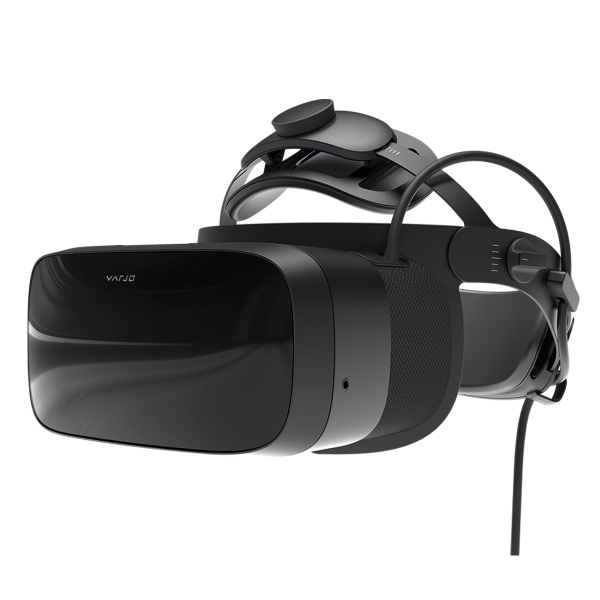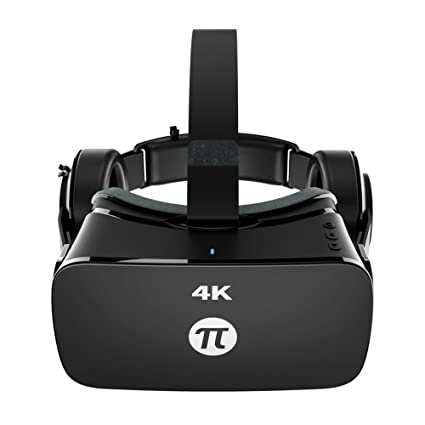Varjo Aero vs Pimax 4K
When you compare the Varjo Aero to the Pimax 4K you can see which VR Headset is better. Let's take a look of the comparison, and see which model of VR Headset out ontop.
What VR Headset is better?
I have both the Varjo Aero and the Pimax 4K virtual reality headsets in front of me, and I am going to compare them to one another. Both of these headsets offer great features, but each has its own advantages and disadvantages.
The Varjo Aero has a resolution of 2880 x 2720 px and offers a field of view of 115°. This resolution is slightly higher than that offered by the Pimax 4K which has a resolution of 3840 × 2160 px with a field of view of 110°. The extra resolution offered by the Varjo Aero gives it an edge here; however, this also means it requires a minimum CPU requirement that’s slightly higher as well (Intel Core i5-4590 or Intel Xeon E5-1620 or AMD Ryzen 5 1500X equivalent).
The Pimax 4K does have one advantage over the Varjo Aero; its minimum graphics requirements are lower than those for the Varjo (NVIDIA GeForce GTX 960/AMD R9 vs NVIDIA GeForce RTX 3050/NVIDIA RTX A2000 or Quadro RTX 4000). Both headsets feature 360 tracking, room scale capabilities, and refresh rates of 90Hz, making them equally good choices for VR gaming experiences.
In my opinion, I prefer using the Varjo Aero headset due to its higher resolution display. Although it requires more powerful hardware specifications compared to the Pimax 4K headset, I find that it provides better overall visual quality while in use which makes my VR experience much more enjoyable. Additionally, since it uses PCVR technology rather than smartphone-based solutions like most other available headsets do today, it provides greater flexibility when connecting up other devices such as controllers etc., further enhancing your gaming sessions.
Specs comparison between the two VR Headsets
| Varjo Aero | Pimax 4K | |
|---|---|---|
| Overview | ||
| Brand | Varjo | Pimax |
| Model Name | Aero | 4K |
| Release Date | 21102021 | 2017 |
| Country of Origin | Finland | China |
| Category | PC VR | PC VR |
| Display | ||
| Field of View | 115° | 110° |
| Resolution | 2880 x 2720 px (per eye) | 3840 × 2160 px |
| Refresh Rate | 90 Hz | 90 Hz |
| Display Type | LCD | CLPL |
| Minimum Requirements | ||
| Min. CPU Required | Intel Core i5-4590, Intel Xeon E5-1620, AMD Ryzen 5 1500X equivalent or better | Intel i5 |
| Min. Graphics Required | NVIDIA GeForce RTX 3050/2060, NVIDIA RTX A2000 or NVIDIA Quadro RTX 4000 | Nvidia GTX 960 / AMD R9 |
| Min. RAM Required | 8 GB | 4 GB |
| Operating Systems | Microsoft Windows | Microsoft Windows |
| Sizing | ||
| Weight | 487 g + headband 230 g | 290 g |
| Dimensions | 300 x 200 x 170 mm | 179 × 90 × 87 mm |
| Features | ||
| Room Scale? | YES | |
| 360 Tracking? | YES | YES |
| Positional Tracking? | YES | |
| Front Camera? | YES | |
| Eye Tracking? | YES | |
| Cooling System | YES | |
| Built in Headphones? | YES | |
| Built in Microphone? | YES | |
| IPD Adjustment? | YES | YES |
| Lens to Eye Adjustment? | YES | |
| USB? | YES | YES |
| Display Port? | YES | |
| HDMI? | YES | |

